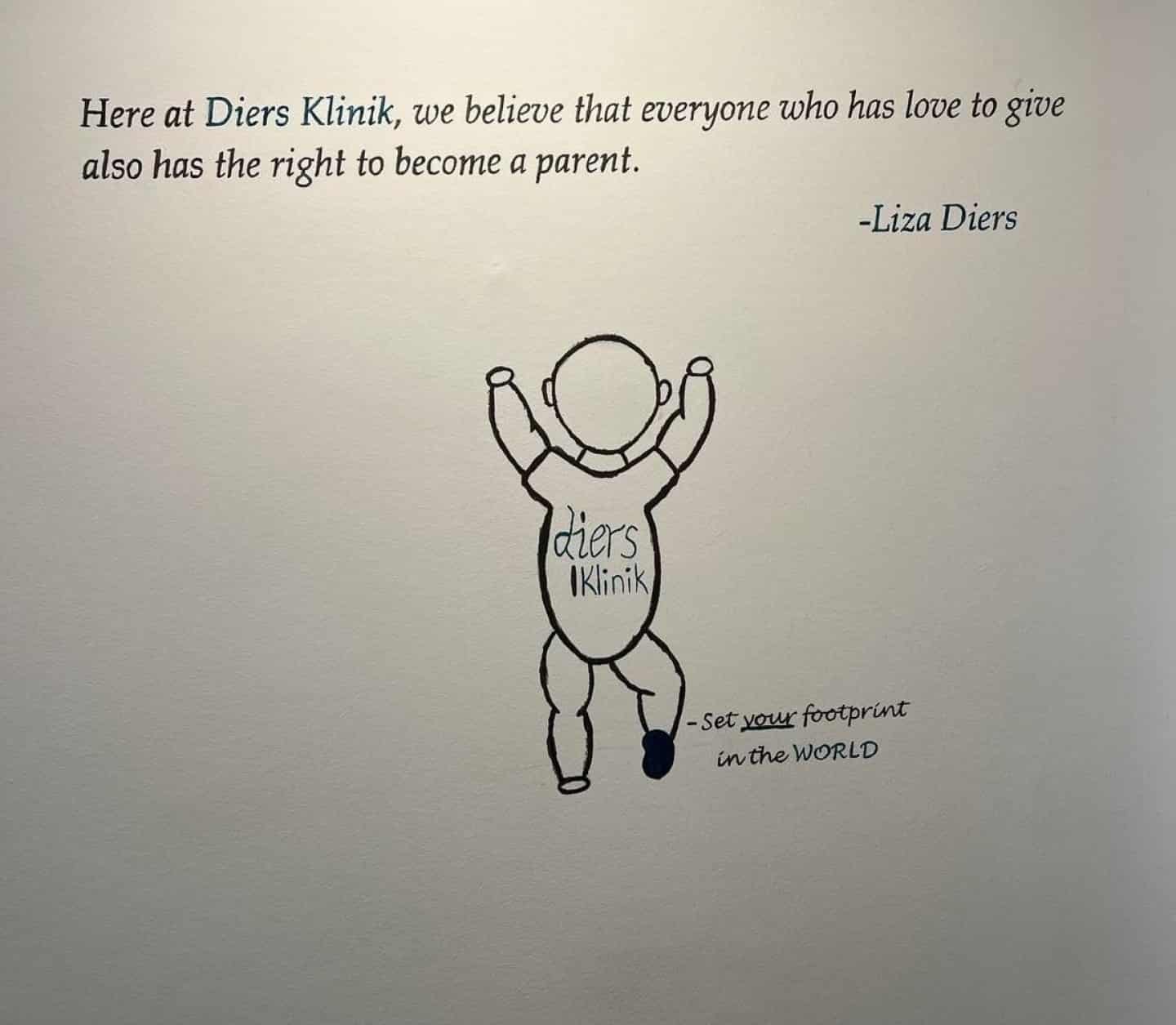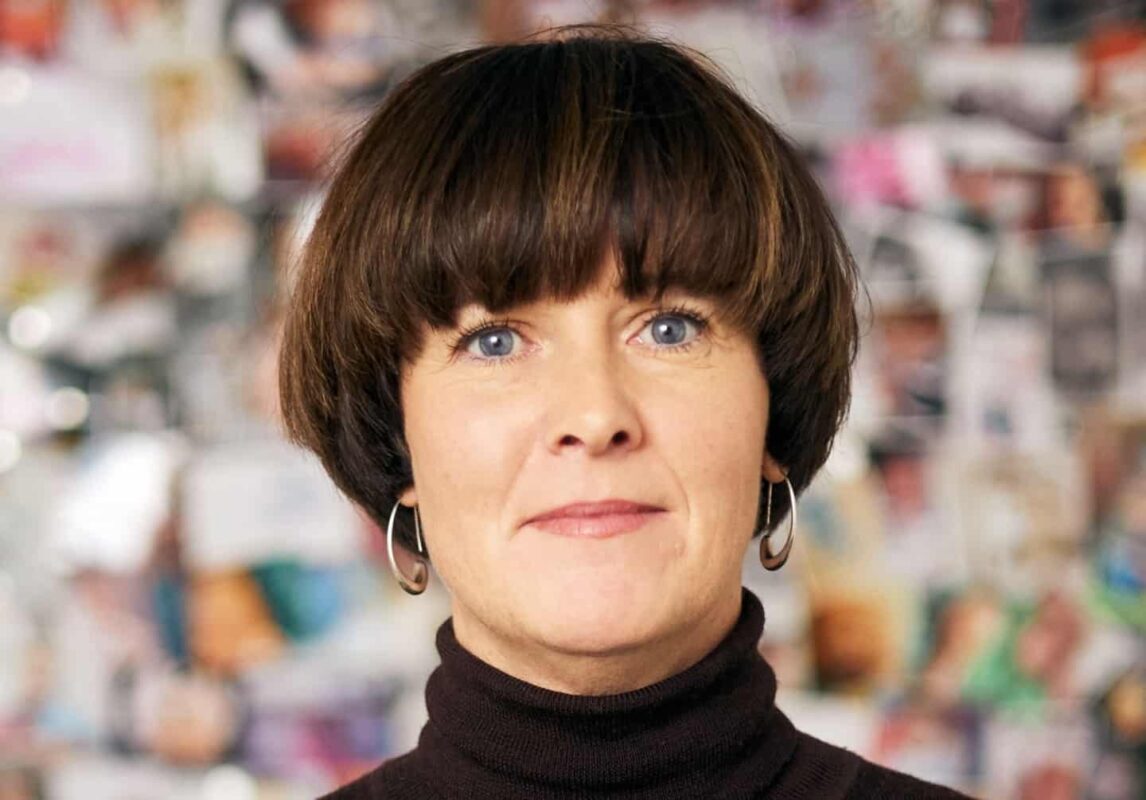Liza helps women get pregnant: – ‘We have clients who have to make up a lie about how their child came to be’
Liza Diers and her wife had to sneak in through a doctor’s back door to become lesbian parents 16 years ago. Now, she makes a living by helping others get pregnant and achieve the dream of parenthood, regardless of their family type. The mission has encountered bumps along the way, and several myths and barriers still persist for some of her clients.
At Store Torv, in the heart of Aarhus, there are rooms on the third floor where a great many babies are conceived every year. The walls are teeming with photos of these little miracles, seamlessly blending with the rest of the decor, which, with its coffee machine, potted plants, play corner, and chairs, resembles an ordinary waiting room.
This is the private fertility clinic, Diers Klinik, where individuals can seek assistance in realizing their dreams of becoming parents. Both the statistics and the numerous photos of newborns bear testament to its success.
The dream of having children remains the same for pilgrim customers, who come from from all corners of the globe, representing various sexual orientations, family structures, and marital statuses.
The owner and initiator is 46-year-old Liza Diers, who herself is a mother to three donor-conceived children, aged nine, 14, and 16, with her wife, Lise. The inception of the clinic coincided with the couple’s journey to their first child back in 2006.
At the time, Danish legislation didn’t permit lesbians and single individuals to receive fertility treatments from doctors. However, this didn’t deter Liza and Lise.
“I contacted a doctor who was willing to assist us, but we had to enter through the back entrance after closing hours. During our conversation, we discovered that the law didn’t specify whether other professional groups could perform these procedures, which became our loophole to take matters into our own hands,” Liza Diers explains.
Being a trained midwife herself, she was qualified to perform insemination treatments (IUI). At that point, a few midwives were helping lesbian couples get pregnant and becoming parents, a trend that was already gaining traction.
Everyone has the right to have children
Liza Diers eventually apprenticed with the aforementioned doctor and formed a partnership with him to help the women get pregnant that he couldn’t assist.
In that way, discrimination became the foundation of the clinic, where all of the couple’s own children were also born. Lise gave birth to the oldest and youngest child, while Liza gave birth to the middle one.
“I had a story that allowed me to empathize with women who wanted to have children without necessarily involving a man. My mission is to assist any woman or couple – single, lesbian, transgender or heterosexual – in achieving pregnancy,” she remarks.
Over the years, the number of clients at the clinic has steadily increased. Nationally, fertility treatments have seen a 55 percent rise for lesbian couples and single women in Denmark since 2012, according to data from the Danish Health Data Agency.
Various forms of fertility treatment are available, but Diers Klinik specializes in facilitating natural pregnancies through insemination with donor or partner sperm, focusing on understanding each woman’s individual cycle without resorting to hormone treatments.
“It’s a common misconception that you only need fertility treatment because you are stuggling with fertility and are unable to get pregnant naturally. There are two different target groups. Most of our clients are healthy and fertile, and we refrain from referring to our clients as patients,” Liza Diers emphasizes.
Help to get pregnant – The rainbow didn’t last
Despite the changing times and evolving attitudes, Liza still draws from her own experiences as a mother of donor-conceived children in her work at the clinic. The struggle wasn’t solely due to legislation; societal concerns also cast a shadow on their dream of having a family.
“I was deeply affected by the fact that many people around us were worried that our children lacked a male role model. This made me anxious about the impact of raising children in a fatherless environment,” Liza Diers confides.

Initially, Liza and Lise explored the idea of creating a “rainbow family” by involving male friends. However, as discussions intensified, it became clear that this arrangement didn’t align with their desires.
“But as our conversations deepened, we realized that it didn’t feel right for us. We didn’t want to share our children with others, to put it bluntly,” she states.
Donor sperm eventually provided the solution, and the worries about a family without a father have since been completely silenced, she says.
“My own children have never felt the need for male figures in their upbringing or expressed any such interest. It’s mostly my own need when the topic comes up. It’s remarkable how uncomplicated it has been,” she notes.
Today, research has also shown that having same-sex parents or growing up with a single mother has no negative effect on children.
A large study from the University of Cambridge concluded in 2015, for example, that children of solo mothers by chice “have exactly the same risk of getting into problems and the same chance of having a successful life as all other children”. “What matters most for children’s outcomes in solo mother families is not the absence of a father, nor donor conception, but the quality of parenting, and positive parent-child relationships.”
Help to get pregnant with donor sperm – The choice of donor
However, women can’t avoid the fact that achieving pregnancy requires male sperm. For Liza and Lise, selecting a donor was a lengthy process.
“I felt conflicted about not knowing the person whose genes we would be mixing with. Despite my preference for a dark-haired and open donor, we ended up choosing an anonymous blonde donor,” she recalls.

Doubts escalated to the point where Liza sought input from the sperm bank’s employees. When they unanimously recommended the same donor, the decision was made.
“It was crucial to me that they spoke highly of him as a person. It provided the peace of mind I needed,” she adds.
Reflecting on the choice today, Liza is deeply moved.
The question of whether it was the right choice can seem both rude and silly to ask today. When it comes, Liza Diers goes quiet.
– Oh. I am truly touched
She pauses again.
“He has given us the greatest gift, and we wouldn’t have had our third child without the same donor. I could never imagine building a family with anyone else,” she says.
These experiences have shaped Liza’s advice to clients:
Ultimately, everyone will be content with the outcome. However, it’s essential that the choice of donor resonates deep within you.
Picky women
According to Liza Diers, the key to dispelling taboos surrounding fertility treatments and reducing discrimination and prejudice against same-sex parents lies in complete openness.
“From an early age, even before our children could articulate themselves, we explained to them that they didn’t have a father, but two mothers. They never expressed any discontent or mentioned being teased because of it,” she asserts.
While her own family life is relatively free of biases, there is still work to be done in relation to the fertility clinic.
“Public opinion has evolved significantly alongside changes in legislation, and many lesbians from my generation now have children. However, there’s still a stereotype that single mothers are picky women who couldn’t find a man,” Liza Diers remarks.
“And that’s not the case?”
“Some seek assistance because their biological clock is ticking, and they haven’t found the right partner, while others have been in relationships where the man had reservations about starting a family. But there are just as many women who want to embark on the journey to parenthood independently,” Liza Diers says.
In her capacity as a midwife, Liza emphasizes the importance of dispelling the notion that one type of family is superior to others. She believes this mission continues alongside the growing number of LGBTQ+ individuals seeking fertility services at the clinic.
“Progress is happening rapidly, and new generations of clients are emerging. This may also bring new biases, but it’s by no means certain,” she concludes.
Myth still holds
Nevertheless, outside Denmark, it’s not as easy to have children within alternative family structures. Last year, 2,825 foreigners traveled to Denmark to get help to get pregnant through fertility treatment involving donor sperm, accounting for 43 percent of all such treatments.
Eighty percent of Liza’s clients are international, mainly from Germany and England.

“We have clients who must fabricate stories about how their child came into existence, as they face potential ostracization in their local communities or bullying of their children. Nevertheless, we always advise them not to keep it a secret from their children,” Liza Diers points out.
She acknowledges that in certain cases, not having a father figure present can be deemed unacceptable. Women who use egg donors may also face shame for not being the biological mothers of their children.
“Denmark boasts more liberal legislation and a more accepting stance, which is why we see this trend of fertility tourism. In several countries, it’s still illegal for single individuals and lesbians to access fertility treatments, and there’s limited control over donor selection. Even in countries like Norway and Sweden, you can’t choose your own donor.”
Expensive to require help to get pregnant?
Economically speaking, the Danish are also privileged, Liza Diers says.
“Practically everyone can access fertility treatment for their first child for free within the Danish public healthcare system. Those who choose us typically have exhausted their free attempts, desire shorter wait times, or seek additional personalized care,” she explains.
One enduring myth, however, is the perception that private fertility treatment is expensive.
“Fertility treatment can indeed be a costly process, depending on the type of treatment and the number of attempts required. For individuals without biological reproductive issues, where the first attempt succeeds, the cost can be as low as around GBP 500 for insemination and counseling with us,” Liza Diers clarifies.
“However, if sperm donation, IVF, or other interventions are necessary, alongside multiple tests, costs can escalate rapidly. Egg donation can easily exceed GBP 5,500 and more,” she adds.
Despite this, she stresses that, all factors considered, raising a child is inherently expensive from a broader perspective.
If the walls of the premises at Store Torv in Aarhus could talk, they would surely affirm that every baby is worth every penny!
Translated article from Avisen Danmark.

